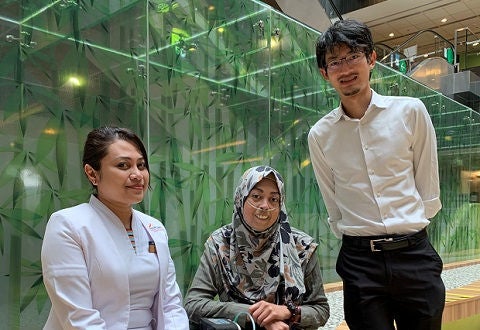
High blood pressure in the lungs, or pulmonary arterial hypertension, is a rare but serious condition.
Pulmonary arterial hypertension (PAH) is one form of pulmonary hypertension (PH), which refers to high blood pressure in the blood vessels of the lungs. Patients with PAH may eventually develop weakened right heart muscles as they work harder to pump blood through the lungs.
Symptoms include shortness of breath during physical or normal activities. The breathlessness can be so severe that even daily walking becomes a difficult chore. Patients may experience dizziness, especially when climbing stairs or standing for a prolonged period.
PAH patients are advised to avoid strenuous activity and pregnancy. PAH can affect people of any age, sex or race, but is more common in women aged between 30 and 50. People with certain autoimmune diseases or a family history of the condition are more susceptible, although in some cases there is no known cause or prevention, except for those that are drug-induced.
This progressive condition can lead to premature death. Currently, there is no cure for PAH and patients need to be on lifelong treatment.
Given its adverse impact on quality of life and life span, awareness about this little-known disease is crucial to ensure cases get diagnosed and treated early.
“It is a rare disease with very poor outcomes if untreated. It is often under-diagnosed and is not well-recognised, even though this disease entails much mortality and morbidity,” said Associate Professor Jonathan Yap, Consultant, Department of Cardiology, National Heart Centre Singapore (NHCS).
A ray of hope
PAH cases are mainly discovered with the help of ultrasound scans of the heart, especially for patients with unexplained persistent breathlessness. The number of cases is expected to grow as awareness of this condition increases.
Treatment with drugs can arrest damage to the heart, improve symptoms, and help patients resume a more normal lifestyle. Oral medications that work to dilate the blood vessels of the lung are usually the first line of treatment for PAH.
“Until about a decade ago, the prognosis for PAH was bleak, but with improving treatment options, there is much hope for PAH patients,” said Prof Yap.
For suitable severe cases, Intravenous Epoprostenol (IV therapy) is recommended. This is one of the few drug therapies proven to reduce PAH-related deaths. In Singapore, it is primarily available in NHCS.
Patients on IV therapy have to carry a pump — slightly larger than the size of a palm and can be carried in a bag — connected to IV tubes, which go under the skin into a blood vessel in the chest or neck to deliver medication constantly and directly to the pulmonary artery. Patients need to return to NHCS every few months to have the tubes changed.
The pump delivers the drug slowly and continuously throughout the day, and the medication cannot be stopped abruptly. With IV therapy, many patients find an improvement in their symptoms. They are less breathless and can lead more normal lives, including doing light exercises.
However, as IV therapy is difficult to start and manage, most patients opt for oral medication first. Many are worried about the challenges of diluting the drug, and handling the pump and syringes. It is a lifelong treatment that can be financially and psychologically straining for some patients.

<<A multidisciplinary team provides timely care for patients with PAH.
(From left to right) Senior Staff Nurse Sumathy D/O Perumal, Nurse Clinician
Aidila Bte Ismail, Associate Professor Jonathan Yap, Associate Professor Lim
Soo Teik, Associate Professor Tan Ju Le, and Senior Staff Nurse Lim Chee Lan.>>
Careful planning
It requires months of planning, counselling, and teaching with the help of the doctor, nurse, pharmacist and caregiver before a patient can begin this complex therapy.
A nursing team will assess the patient, and offer as many training sessions as needed for the patient to become competent and confident in managing the device, including replacing the cartridge containing the drug when it runs out. As patients may experience difficulty in managing the IV therapy at times, caregivers join the sessions to understand how things work.
“This helps ensure good preparation work, and coordination between the care team, the caregivers, and the patient. It takes a dedicated community to manage this,” said Prof Yap.
Multifaceted approach
NHCS has a team of specialists from various disciplines to treat the full spectrum of PH. Apart from a weekly PH clinic run by a cardiologist, NHCS also operates a one-stop monthly clinic offering comprehensive and holistic care to PH patients. During this session, patients can consult healthcare professionals across a range of specialties, including respiratory medicine, rheumatology, and palliative care.
“The field of PH is growing, and it is important that we, as part of the healthcare team, advocate for patients with this rare condition,” Prof Yap said.













 Get it on Google Play
Get it on Google Play